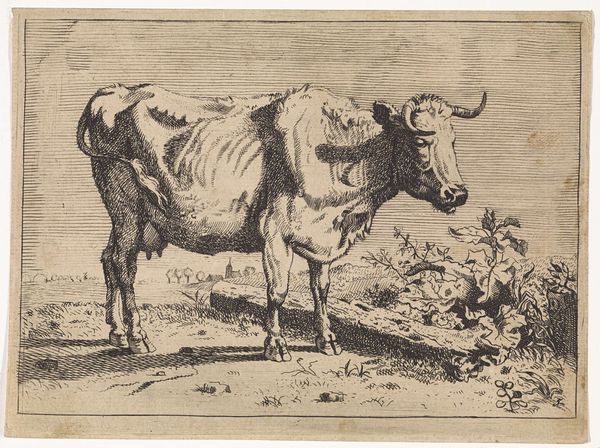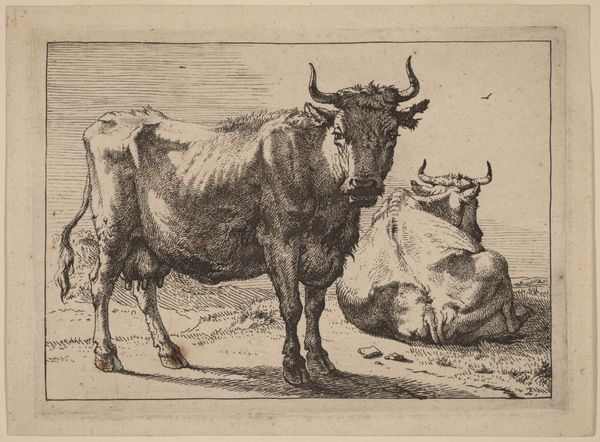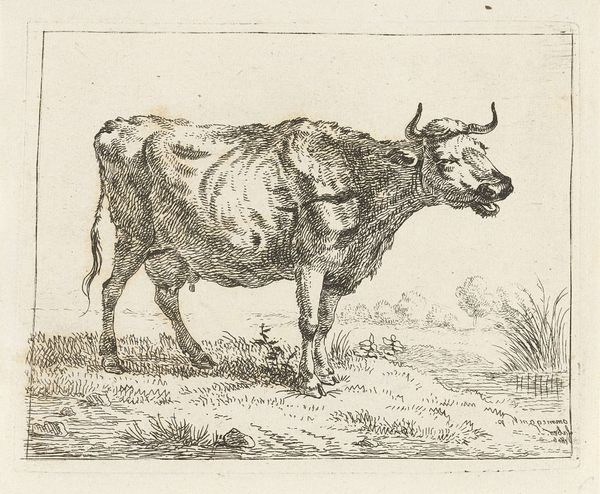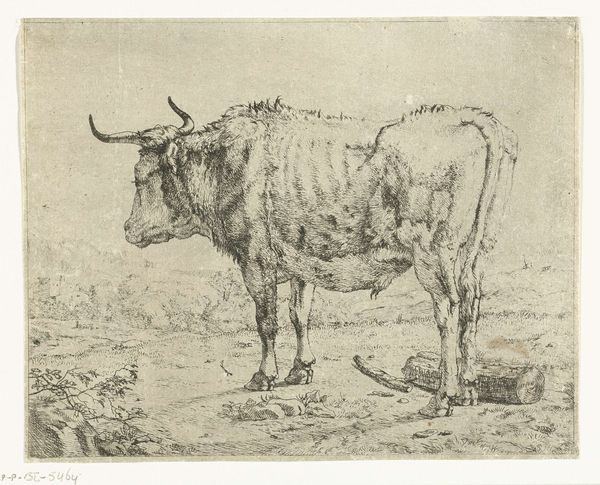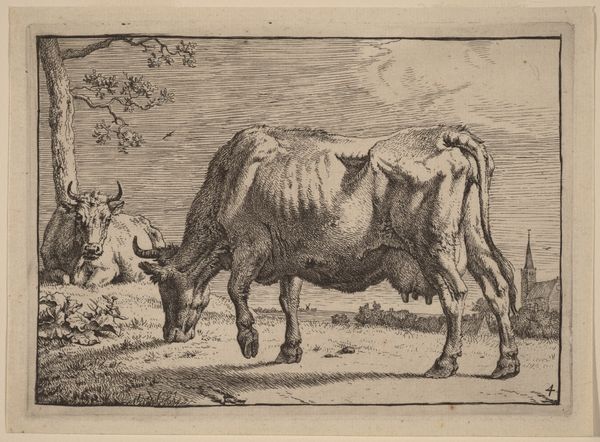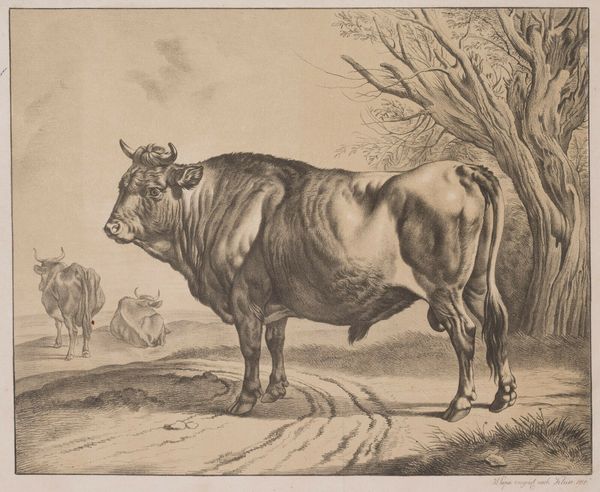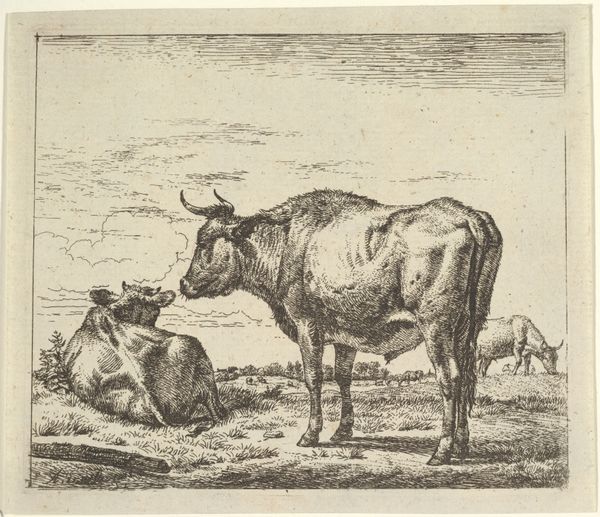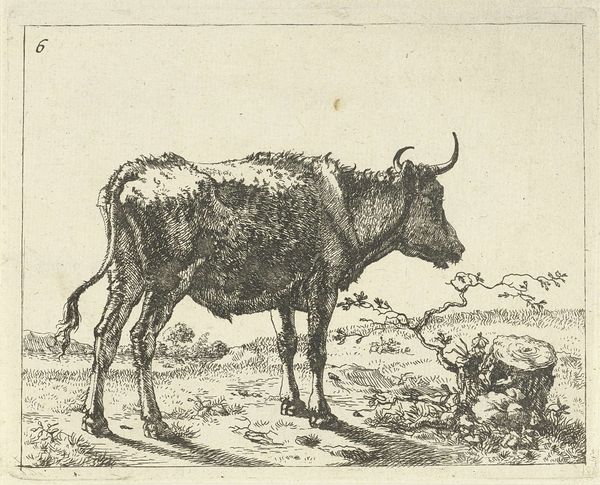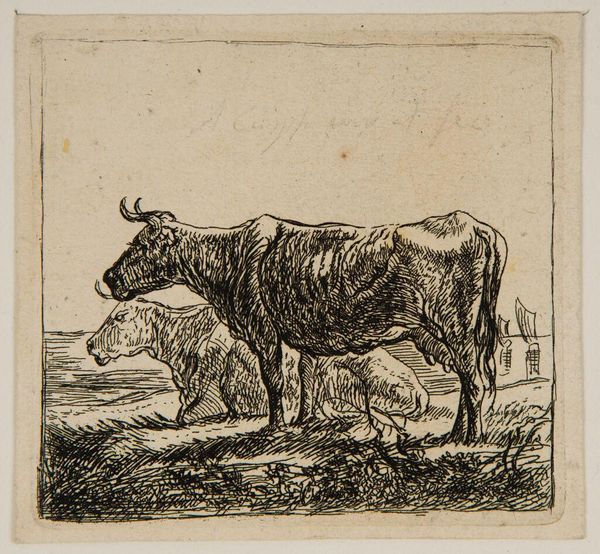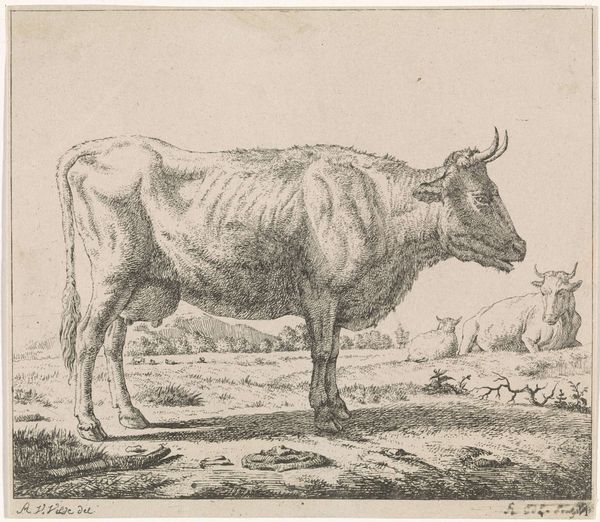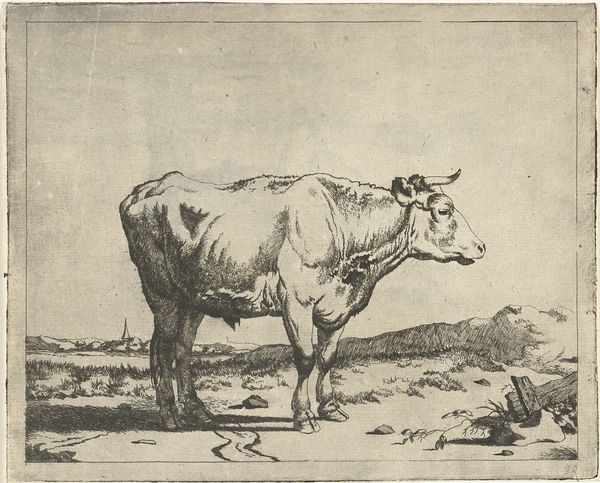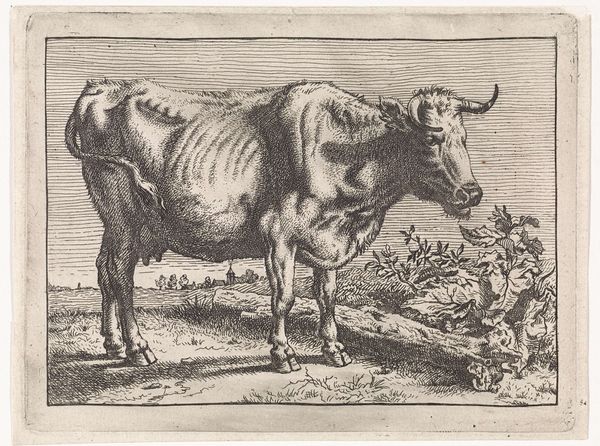
print, etching
#
portrait
#
baroque
#
animal
#
dutch-golden-age
# print
#
etching
#
landscape
#
figuration
#
realism
Copyright: National Gallery of Art: CC0 1.0
Editor: Here we have Paulus Potter’s "Standing Cow," or, as it's sometimes called, "Cow with a Crumpled Horn," from 1650, done in etching. It’s remarkably…stark. What strikes you most about this depiction? Curator: Oh, darling, where do I even begin? It isn’t just stark; it's startling! It's like Potter grabbed this cow straight out of a Breugel painting and planted her right here. Look at those exquisitely etched lines – they don't idealize; they *reveal*. Can't you almost feel the rough texture of her hide? See how she dominates the landscape, a queen on her humble throne of grass? Editor: Yes, I see that. She seems… unglamorous. Not your typical, idealized animal portrait. Curator: Precisely! That’s Potter’s genius! This isn’t some fluffy pet; it's a working animal. There’s a brutal honesty, a quiet dignity that screams, "I am essential!" Think about it – the Dutch Golden Age wasn’t all tulips and traders; it was built on agriculture, on the backs (and udders) of cows like her. Isn’t there something strangely beautiful in that raw truth? Editor: I guess there is, when you put it that way. I hadn’t considered the symbolism behind the realism. Curator: Symbols are everywhere, my dear, sometimes hiding in plain sight, sometimes wearing a crumpled horn like a crown! That’s the magic of art, isn’t it? Finding beauty in the mundane, revealing the epic in the everyday. Now, go forth and milk that cow for all she’s worth! Editor: Definitely something to think about. Thanks for your insight.
Comments
No comments
Be the first to comment and join the conversation on the ultimate creative platform.
